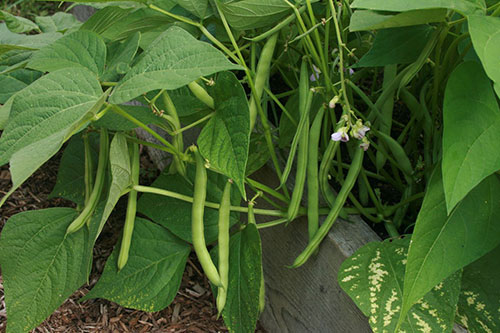A Shady-Yard Vegetable Garden: Is It Possible?
A reader emailed us asking if there was any hope for growing garden vegetables in her shady yard, in which the sun was being blocked out by several mature oak trees.
We did some research, and some thinking, and this is what we came up with. If anyone has any stories of successfully growing veggies and herbs in a yard with a lot of shade, please tell us what you did to make this happen! We welcome all pertinent comments on Facebook.
The first tip we came across was to trim all low-hanging tree branches from (in the reader’s case), those great oaks. This makes sense for a few reasons:
1. Trimming your trees will improve their health overall.
2. Trimming your trees will increase the amount of light that comes into your yard, making better growing conditions for your plants.
3. Trimming trees improves safety for little ones (the reader did mention that she had a young child), who may be playing beneath them.
We also found a handy list of garden vegetables that do best with minimal sunlight. Below are the more commonly known ones from that list.
Since our reader also mentioned wishing to garden with her little one, we figured we’d include the ones that will mostly appeal to kids, i.e. not too strong-tasting (lettuce), or fun to grow, like mint.
Shady Characters in the Veggie Garden Story:
Beans (bush variety): 4-5 hours of sun per day
Bok choy: minimum 2 hours of sun per day
Carrots (baby): 3-5 hours per day. If you manage to get 4-5 hours of sun you may get full-size carrots, but the number of days to maturity will increase
Chard: 3-4 hours (will reduce stalk development but produce tender leaves)
Chives: minimum 3 hours of sun per day
Cilantro: minimum 3 hours of sun per day
Kale: 3-4 hours of sun per day
Lettuce: 3-4 hours of sun per day. The shade may actually buy you some additional weeks of harvesting, as lettuce bolts quickly in the heat of summer.
Mesclun greens: 2-3 hours of sun per day. Harvests as quick as 1 month.
Lemon balm: minimum 3 hours of sun per day. Grow lemon balm in its own garden bed, as it is an invasive plant.
Mint: minimum 3 hours of sun per day. Should grow in its own pot, away from the main garden bed.
Parsley: Minimum 3 hours of sun per day
Peas: 4-5 hours of sun per day
Radishes: 4-5 hours of sun per day
Scallions: Scallions are baby onions. Minimum 3 hours of sun per day.
Spinach: 3-4 hours of sun per day. Harvesting as baby spinach will lengthen the growing season.
Other workarounds for your shady garden effort:
Relocate the veggie garden to another, sunnier spot on the property, such as the side of the house, or even the front yard.
Create smaller, mini gardens in spots on the property that you know receive more sun. Be sure, though, that the garden hose is able to reach all of the areas where you plant.
We also came across some information on reflective mulches, which are made of plastic or aluminum and increase the amount of sun absorbed by your growing veggies… but we’re a bit skeptical of this being a safe option for growing food eaten by your family.
According to this article, plastic mulch has been used commercially to hasten the ripening of many fruits and vegetables since the 1960s. However, it is worth pointing out that this is an organic gardening website, so we are searching for healthier methods of growing food for our families. Hot plastic and aluminum exposure seems a bit dubious, if you ask us.
Here is a photo of a reflective mulch… try it at your own risk!
